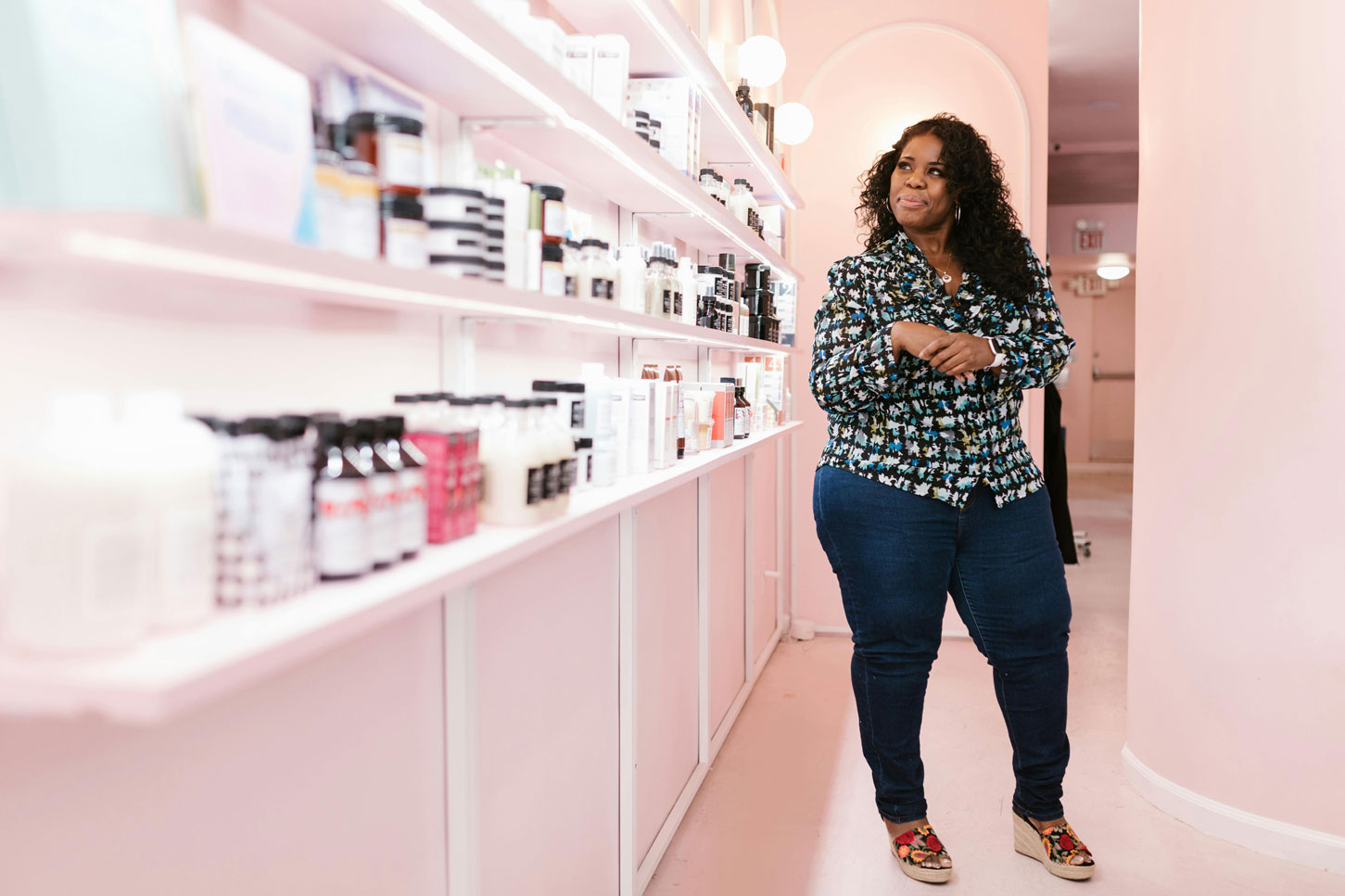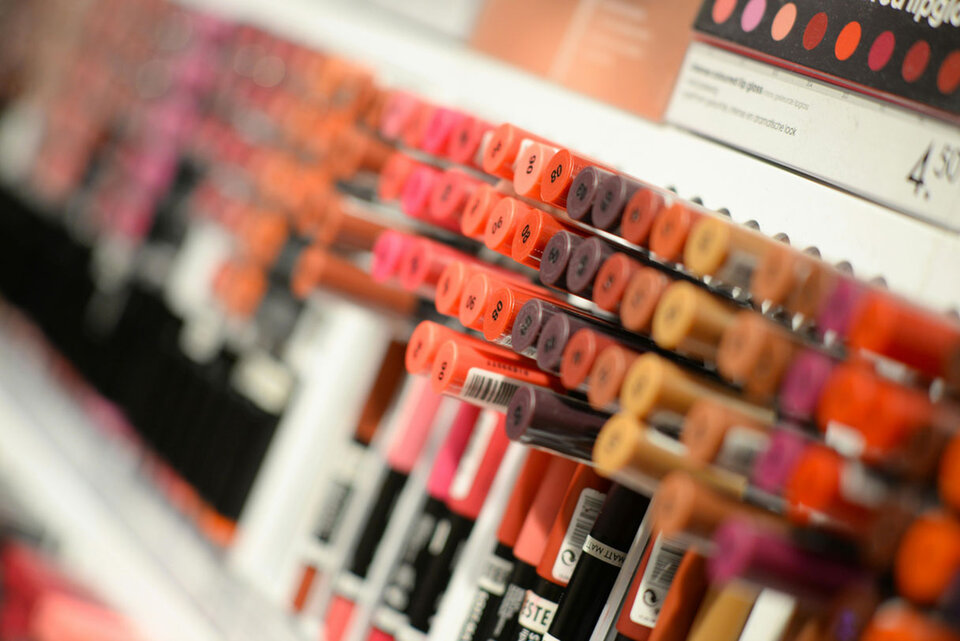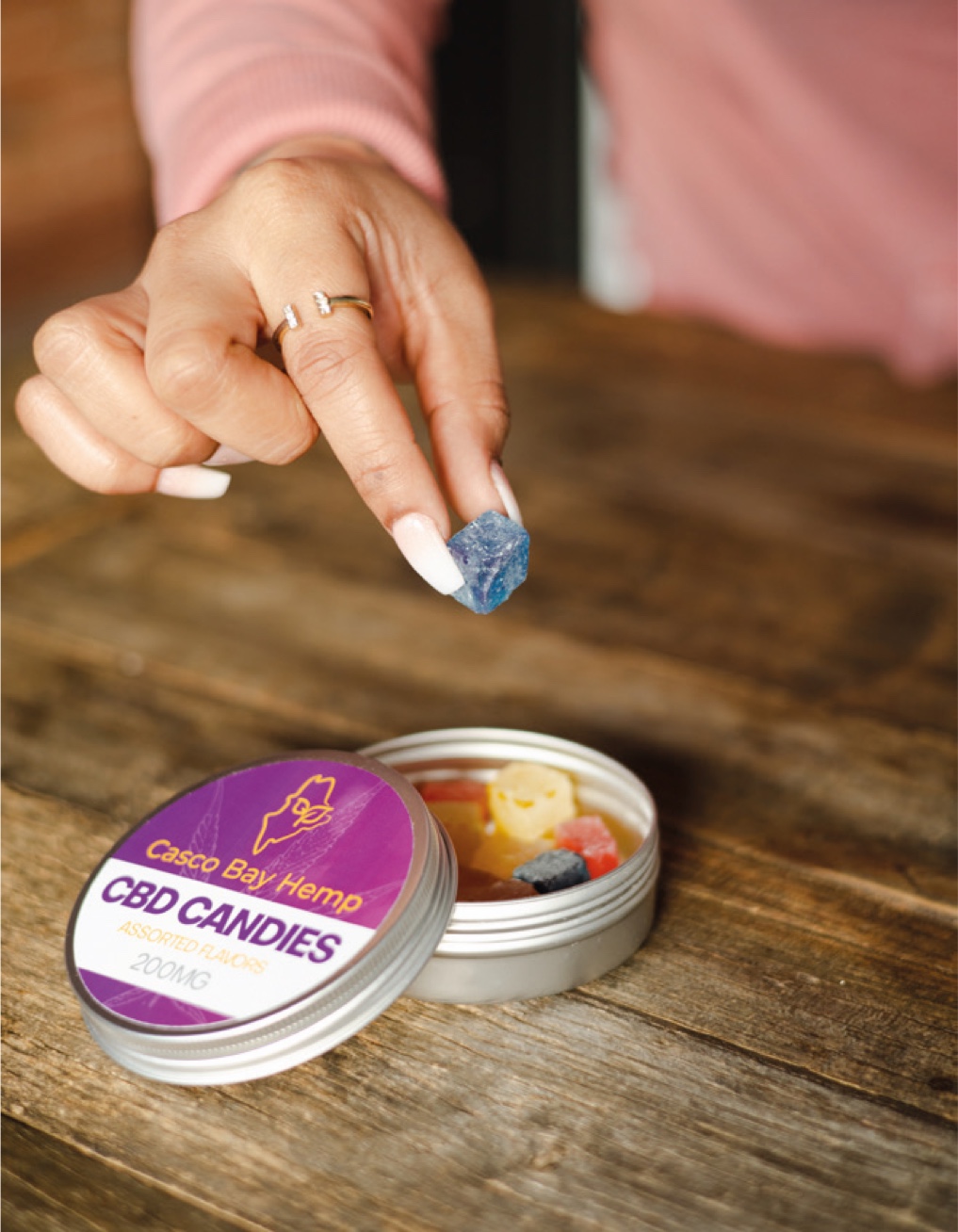Column: CONSUMER PERSPECTIVE
Skinimalism, Hybrid Beauty and What Consumers Really Want
KEYWORDS —
SKINIMALISM;
HYBRID BEAUTY;
CONSUMER PERCEPTION;
CONSUMER TRUST;
BEAUTY MINIMALISM;
DECISION FATIGUE.
Abstract
Studies of major depressive disorder have been correlated with reduced Lactobacillus and Bifidobacteria and symptom severity has been correlated to changes in Firmicutes, Actinobacteria, and Bacteriodes. Gut microbiota that contain more butyrate producers have been correlated with improved quality of life (1).
A study in healthy women providing probiotic yogurt for four weeks showed an improvement in emotional responses as measured by brain scans (2). A subsequent study by Mohammadi et al. (3) investigated the impacts of probiotic yogurt and probiotic capsules over 6 weeks and found a significant improvement in depression-anxiety-stress scores in subjects taking the specific strains of probiotics contained in the yogurt or capsules. Other studies with probiotics have indicated improvements in depression scores, anxiety, postpartum depression and mood rating in an elderly population (4-7).
Other studies have indicated a benefit of probiotic supplementation in alleviating symptoms of stress. In particular, researchers have looked at stress in students as they prepared for exams, while also evaluating other health indicators such as flu and cold symptoms (1). In healthy people, there is an indication that probiotic supplementation may help to maintain memory function under conditions of acute stress.
“
“A study in healthy women providing probiotic yogurt for four weeks showed an improvement in emotional responses as measured by brain scans”
Hybrid beauty products, blending makeup with skincare benefits, are quietly reshaping how consumers think about their routines and the products they choose. Tinted serums with niacinamide, lip oils that hydrate while adding shine, foundations with built-in SPF and antioxidants aren’t just multitaskers; they’re redefining what people expect from beauty. Take “bloss,” for example, a lip balm-gloss hybrid that soothes and conditions while delivering the glossy finish of traditional makeup (lip gloss). Products like these promise fewer steps, less clutter, and no compromise on results.
But the rise of hybrid beauty isn’t just about saving time or shelf space. It reflects a shift in how consumers evaluate products and make decisions. Convenience matters, but so does the reassurance of getting both care and coverage in one choice. It’s why multi-use sticks, tinted moisturizers with sun protection, or primer-serum hybrids have found such an eager audience: they fit into the rhythm of daily life while offering the feeling of doing something good for you.
This shift isn’t just about product claims. It speaks to how people manage effort, risk, and trust in the products they bring into their lives. Understanding why hybrid products resonate means looking beyond the surface to the behavioral and psychological patterns shaping these choices. What feels simple isn’t always simple at all and that’s where this hybrid story begins. To understand the staying power of hybrid beauty, it helps to start with the practical drivers, how consumers weigh effort, efficiency, and value in an increasingly crowded and complex product landscape.
Skinimalism and the Consumer Drivers Behind Hybrid Beauty Trends
The rise of hybrid beauty is closely tied to the broader movement of skinimalism, a minimalist approach to skincare and makeup that prioritizes healthy, natural-looking skin over heavy coverage or burdensome, multi-step routines. It isn’t about abandoning skincare, but about making beauty feel intentional, effective, and less overwhelming. As described in both a 2025 article in Real Simple and a 2022 article from CNN Underscored, skinimalism encourages consumers to focus on what their skin actually needs, cutting back on product overload in favor of more streamlined routines and well-formulated essentials that work hard without the clutter or crowded makeup drawers.
Hybrid beauty products, whether tinted serums with niacinamide, a “bloss” (balm-gloss combo), or a foundation with SPF and antioxidants, fit squarely into this shift in beauty routines. They offer a promise that resonates with today’s consumers: simplify the routine without sacrificing results.
Several consumer drivers can help explain why hybrid products align so well with the skinimalism consumer mindset:
- Convenience and Time-Saving: Hybrid products directly address the desire for fewer steps and faster routines, a key motivator in consumer product selection. Research on habit formation and consumer behavior shows that products which reduce the “effort cost” of use are more likely to be adopted and integrated into daily routines (Wood & Neal, 2009). In beauty, convenience often competes with efficacy, hybrid products attempt to resolve this tension.
- Desire for Efficacy: Simplicity alone doesn’t win consumer trust, but visible, credible results do. Studies in consumer satisfaction highlight that perceived efficacy is a primary driver of product loyalty and repeat purchase (Oliver, 1999). Hybrid products succeed when they meet performance expectations across their multiple functions, not just offer a “shortcut.”
- Ingredient Consciousness and Transparency: Consumer interest in ingredient transparency continues to rise, driven by increasing literacy around formulations and the growth of "clean beauty" narratives (NielsenIQ, 2022). Research suggests that consumers perceive products with clear, familiar ingredient lists as safer and more trustworthy (NSF, 2025). Highlighting actives like hyaluronic acid or niacinamide taps into this ingredient-focused decision-making process.
- Sustainability and Waste Reduction: Sustainability is not just an ethical consideration—it’s a purchasing driver. According to McKinsey & Company’s 2023 report on sustainability in CPG, products that highlight environmental or social responsibility have seen stronger growth, averaging 28% cumulative growth over the past five years—compared to 20% growth for products without these claims. Behavioral economics research also suggests that offering “bundled benefits” like sustainability alongside convenience reduces the mental trade-offs consumers feel they need to make (Thøgersen & Crompton, 2009).


Why Hybrid Products Feel Right
While the practical benefits of hybrid beauty like convenience, efficacy, ingredient transparency, and sustainability help explain its appeal, the deeper reasons consumers gravitate toward these products are often psychologically driven. How we evaluate choices, process information, and form impressions of trust and value plays a central role in shaping the success of this category.
The Paradox of Choice & Decision Fatigue:
When faced with too many options, people often feel overwhelmed rather than empowered. This concept, known as the paradox of choice (Schwartz, 2015), suggests that more options can lead to decision fatigue, dissatisfaction, or even avoidance of choice altogether. In beauty, where product categories often overlap—moisturizer, serum, primer, foundation, sunscreen—the cognitive load of figuring out what to use (and in what order) adds friction to the process. Hybrid products simplify this equation. A tinted SPF moisturizer or a lip treatment that also adds gloss and color eliminates the need to weigh multiple product decisions, reducing that psychological strain. It’s not just fewer steps—it’s fewer choices that need to be made.
Cognitive Ease:
Consumers tend to favor choices that feel easy and fluent, something that psychologists call cognitive ease (Kahneman, 2011). When something feels simple, we’re more likely to perceive it as familiar, trustworthy, and right. Hybrid products tap into this by reducing the effort of both decision-making and product use. For example, a primer-serum hybrid doesn’t require the user to decide between "do I prep or do I treat?"—it allows them to feel confident that they’re doing both, with no extra work. The smoother the experience, the more likely it is to become a habit.
Trust and Credibility:
Does More Functionality Build Confidence or Skepticism? While consumers appreciate multi-functionality, there’s also a delicate balance between “multi-benefit” and “too good to be true.” Psychological research on persuasion and credibility suggests that claims that feel too broad or vague can trigger skepticism (Petty & Cacioppo, 1986). For example, "all-in-one miracle product" may raise more eyebrows than "hydrating serum with vitamin C and SPF." Brands that succeed in hybrid beauty often build trust by anchoring their multi-functional claims in specific, credible ingredients or technologies. Rather than promising "does it all," they clearly explain what the product does and how it does it. This helps mitigate the risk that consumers will question whether a product trying to do many things can truly do any of them well.
The Power of Framing:
The way hybrid products are framed, such as through labels like “multi-benefit,” “2-in-1,” “all-in-one,” or “treatment + color”, can significantly shape consumer perception. Behavioral science research shows that how a choice is presented often influences whether it feels appealing (Tversky & Kahneman, 1981). Positive framing (like “2-in-1 hydrating and brightening serum”) tends to highlight added value, while ambiguous or inflated claims (“the only product you’ll ever need”) can create doubt. Consumers are especially sensitive to claims that feel personalized and purposeful. Messaging that focuses on “targeted benefits” (such as “tinted SPF to hydrate and protect sensitive skin”) tends to be more persuasive than broad, one-size-fits-all language.
Hybrid beauty succeeds when it reduces complexity without introducing new doubts. The emotional payoff isn’t just about saving time. It’s about making the consumer feel smart, cared for, and confident in their choices. By understanding the behavioral science behind these decisions, brands can design hybrid products and messaging that truly meet both the practical and psychological needs of their audience.

When Hybrid Claims Create Friction
Despite the strong appeal of hybrid beauty, these products are not immune to consumer skepticism. In fact, the very features that make hybrid products attractive, like multi-functionality, convenience, and simplicity, can also become barriers to adoption if they aren’t communicated clearly or if consumer expectations aren’t met. Behavioral science research reminds us that consumer trust can be easily shaken when claims feel vague, exaggerated, or confusing.
"If it does everything, does it do anything well?" When a single product promises hydration, sun protection, color correction, anti-aging benefits, and full coverage, it risks raising a familiar consumer doubt: can one product really do all of that, and do it well? Research on persuasion suggests that overly broad claims can trigger psychological reactance, a defensive response where consumers push back against marketing they perceive as manipulative or unrealistic (Brehm, 1966). For example, while a CC cream with SPF and brightening claims may seem like a great solution, if the SPF is too low to offer meaningful protection or the coverage feels patchy, consumer trust erodes quickly. Instead of feeling empowered by the simplicity, the buyer feels let down and possibly even cheated by unmet promises.
As such, hybrid products often have to walk a fine line between promise and performance. When the list of benefits grows too long, or when marketing language leans into “miracle” or “ultimate solution” territory, their risk of underdelivering and disappointment grows. If a hydrating primer-serum hybrid leaves skin feeling sticky rather than smooth, or a lip gloss-balm wears off too quickly to feel nourishing, the mismatch between expectation and experience leads to disappointment, not delight. From a behavioral perspective, expectation-setting is key to perceived satisfaction (Oliver, 1999). Clear and credible claims that focus on specific, measurable benefits are more likely to drive repeat use than sweeping statements that feel aspirational but vague.
Confusingly, hybrid products sometimes sit in a gray zone between categories, creating uncertainty about how and when they should be used. Is a tinted SPF serum meant to replace foundation, or is it just a light skincare step? Should a lip oil-gloss hybrid be treated as a treatment or a finishing product? When the category position isn’t clear, consumers may default back to their familiar routines—or skip the hybrid product altogether. Successful hybrids often overcome this challenge by anchoring themselves firmly in one category while offering benefits from the other. For example, Milk Makeup’s Hydro Grip Primer markets itself clearly as a primer first, with the added bonus of skincare benefits.
But perhaps the biggest challenge in hybrid beauty is that the term “hybrid” itself doesn’t mean much to the average consumer without explanation. What exactly is being combined? How does it work? What steps is it meant to replace? Brands that succeed in this space often provide straightforward education and context alongside their product claims. Instead of saying “3-in-1 miracle,” they might say “hydration + SPF 30 + lightweight coverage for everyday use.” Framing the product’s role within the consumer’s routine helps reduce uncertainty—and reduces the friction that keeps new products from becoming habits.
This concept of hybrid beauty works best when it simplifies choices without introducing new confusion. Managing expectations, being honest about what the product does (and doesn’t do), and offering clear guidance on use are all critical to avoiding the common pitfalls of this category. The payoff for getting it right is not just consumer interest, it’s lasting consumer trust and loyalty.
Where Hybrid Beauty Goes Next
Hybrid beauty may have started as a convenient solution for simplifying routines, but its future is shaping up to be far more complex and transformative. The next wave of innovation suggests that hybrid products are not just a passing trend; they are part of a deeper cultural shift in how consumers define and demand self-care, efficacy, and authenticity in their beauty products.
One-size-fits-all products have proven inefficient and exclusive of many, and are giving way to products that flex and adapt to individual needs. The rise of skin tone-adapting foundations, color-shifting lip products, and complexion-balancing serums reflects this shift toward responsive beauty, formulas that adjust based on skin tone, pH, or even environmental conditions. This type of personalization reduces the cognitive burden of product matching while amplifying the sense that the product is “made for me.” Behaviorally, this plays into what consumer psychologists call personal relevance, the idea that the more tailored a solution feels, the more likely it is to be trusted, used consistently, and recommended.
Ingredient innovation will continue to push the boundaries of what hybrid beauty can offer. With biotech-derived actives, such as lab-grown collagen or fermented peptides, that offer precise, targeted benefits with a sustainability story that appeals to ingredient-conscious consumers. The inclusion of probiotics and prebiotics in skincare-makeup hybrids can tap into the growing understanding of the skin microbiome, while trending adaptogens like ashwagandha and ginseng reflect the crossover between wellness and beauty. These ingredients don’t just promise surface-level results, they speak to long-term care and inner balance, and align beauty with broader health and well-being narratives.
The next phase for hybrid beauty may also be guided by technology-enabled customization. AI-powered tools promising personalization, such as skin analyzers, digital shade matchers, or diagnostic quizzes, can offer consumers a sense of precision in product selection and help to bridge the gap between personalization and confidence in choice. These tools reduce the uncertainty that often comes with hybrid products by reframing choice as informed rather than risky. When combined with smart recommendations and credible ingredient stories, AI-driven personalization has the potential to deepen trust in hybrid claims.
Hybrid beauty’s current success isn’t just about merging categories, combining different trends, it reflects a cultural reframing of what care and authenticity mean in beauty. Consumers aren’t simply looking to simplify their routines; they are seeking products that respect their intelligence, honor their time, and align with their broader sense of well-being. In this light, hybrid beauty may not be a passing phase, but a signal of deeper consumer priorities: care that feels personal, meaningful, and real. The future of hybrid beauty lies not in doing everything, but in doing what matters. And doing it well.

Studies of major depressive disorder have been correlated with reduced Lactobacillus and Bifidobacteria and symptom severity has been correlated to changes in Firmicutes, Actinobacteria, and Bacteriodes. Gut microbiota that contain more butyrate producers have been correlated with improved quality of life (1).
A study in healthy women providing probiotic yogurt for four weeks showed an improvement in emotional responses as measured by brain scans (2). A subsequent study by Mohammadi et al. (3) investigated the impacts of probiotic yogurt and probiotic capsules over 6 weeks and found a significant improvement in depression-anxiety-stress scores in subjects taking the specific strains of probiotics contained in the yogurt or capsules. Other studies with probiotics have indicated improvements in depression scores, anxiety, postpartum depression and mood rating in an elderly population (4-7).
Other studies have indicated a benefit of probiotic supplementation in alleviating symptoms of stress. In particular, researchers have looked at stress in students as they prepared for exams, while also evaluating other health indicators such as flu and cold symptoms (1). In healthy people, there is an indication that probiotic supplementation may help to maintain memory function under conditions of acute stress.
References and notes
- Wright, R. A., & Brehm, S. S. (1982). Reactance as impression management: A critical review. Journal of Personality and Social Psychology, 42(4), 608.
- Gould, W.J. (2025). How to Practice Skinimalism, the Low-Key Approach to Skin Care. Retrieved from: https://www.realsimple.com/skinimalism-8780662
- Kahneman, D. (2011). Thinking, fast and slow. macmillan.
- McKinsey & Company. (2023). Consumers care about sustainability—and back it up with their wallets. Retrieved from: https://www.mckinsey.com/industries/consumer-packaged-goods/our-insights/consumers-care-about-sustainability-and-back-it-up-with-their-wallets
- NielsenIQ. (2022). Clean beauty: An evolution from ingredients to ethics. Retrieved from: https://nielseniq.com/global/en/insights/analysis/2022/clean-beauty-an-evolution-from-ingredients-to-ethics/
- NSF. (2025). 74% of Consumers Consider Organic Ingredients Important in Personal Care Products. Retrieved from: https://www.nsf.org/news/consumers-consider-personal-care-organic-ingredients-important
- Oliver, R. L. (1999). Whence consumer loyalty?. Journal of marketing, 63(4_suppl1), 33-44.
- Petty, R. E., Cacioppo, J. T., Petty, R. E., & Cacioppo, J. T. (1986). The elaboration likelihood model of persuasion (pp. 1-24). Springer New York.
- Schwartz, B. (2015). The paradox of choice. Positive psychology in practice: Promoting human flourishing in work, health, education, and everyday life, 121-138.
- Shaw, S. (2022). ‘Skinimalism’ is trending: Here’s what we know about the latest skin care trend. Retrieved from: https://www.cnn.com/cnn-underscored/beauty/skinimalism-beauty-trend
- Thøgersen, J., & Crompton, T. (2009). Simple and painless? The limitations of spillover in environmental campaigning. Journal of Consumer Policy, 32, 141-163.
- Tversky, A., & Kahneman, D. (1981). The framing of decisions and the psychology of choice. science, 211(4481), 453-458.
- Wood, W., & Neal, D. T. (2009). The habitual consumer. Journal of Consumer Psychology, 19(4), 579-592.

